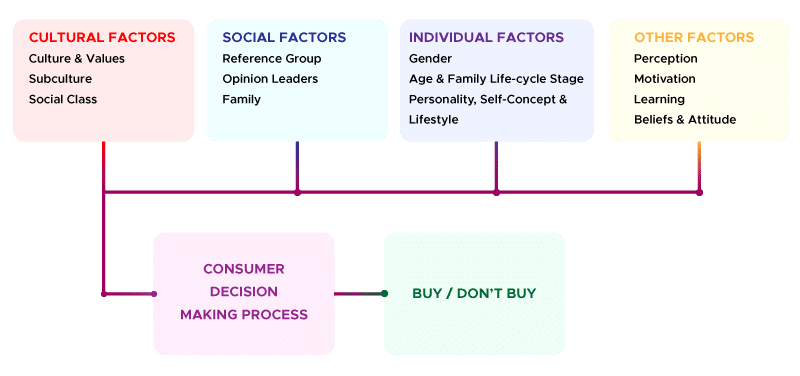Marketing is a multifaceted field in which rational and emotional thinking are crucial in creating effective strategies. Understanding how to blend these two approaches can significantly enhance your marketing efforts.
This article will explain how rational and emotional thinking can be harmoniously integrated into your marketing campaigns to engage your audience and drive growth.
What Is Rational Thinking in Marketing?
Rational thinking is all about logic, data, and reason. When applied to marketing, it involves making decisions based on measurable data and objective analysis. But how does this translate into actionable strategies?
How Does Rational Thinking Drive Marketing Decisions?
Rational thinking drives marketing decisions by focusing on facts and figures. For instance, analyzing customer data helps identify purchasing patterns and market trends. This information enables marketers to tailor their campaigns more precisely, ensuring their strategies are grounded in real-world evidence rather than intuition alone.
Understanding Emotional Thinking in Marketing
Emotional thinking taps into the psychological and emotional aspects of consumer behavior. It’s about connecting with your audience on a deeper level. But why is this connection so powerful?
Why Is Emotional Thinking Crucial in Marketing?
Emotional thinking is crucial because it helps forge a personal connection with your audience. When a brand appeals to emotions, it can create memorable experiences that resonate with consumers personally. This connection often leads to stronger brand loyalty and increased customer retention. For example, think of the last time a brand you felt something; chances are, it left a lasting impression.
Balancing Rational and Emotional Thinking in Marketing
So, how can you effectively balance rational and emotional thinking in your marketing efforts? It’s about finding the right mix.

How to Combine Data with Emotional Appeal
Start by using data to understand your audience’s behaviors. Then, craft your messaging to resonate emotionally with them. For instance, if data shows that your audience values sustainability, you might create an emotionally charged campaign highlighting your brand’s environmental commitment. This way, you’re speaking to and reinforcing their values with data-driven insights.
Crafting a Strategy with Both Thinking Styles
Let’s see how you can develop a marketing strategy incorporating rational and emotional thinking.
Creating Campaigns That Appeal to Both Sides
- Know Your Audience: Begin by researching your target audience. What are your audience’s pain points, needs, and desires? This information is crucial for tailoring your campaign’s rational and emotional aspects.
- Develop Data-Driven Insights: Use analytics to gather data on your audience, including browsing patterns, purchase history, and engagement rates.
- Design Emotional Hooks: Once you have your data, use it to create emotional hooks. For example, if your data indicates that your audience values family time, create content that evokes warmth and togetherness.
- Test and Refine: Implement A/B testing to see which combination of rational and emotional elements performs better. Use this feedback to refine your approach constantly.
Did you know the idea that our brains are divided into left and right hemispheres, with each having distinct functions, is a myth? Read Full Article on Harvard Health Publishing
How Brands Have Mastered the Blend
Let’s take a look at Apple’s approach. They combine sleek, data-backed product features with emotionally appealing advertisements emphasizing design, lifestyle, and innovation. This blend has helped them create a loyal customer base that is informed and emotionally invested in their products.
The Role of Storytelling
Storytelling is a powerful tool that integrates both rational and emotional thinking.
Why Is Storytelling So Effective?
Storytelling taps into emotional thinking by creating narratives that resonate with audiences personally. When done well, it can also incorporate rational elements by providing logical reasons why the audience should care about the story. This dual approach enhances engagement and makes the message more compelling.
Leveraging Social Proof and Testimonials
Social proof and testimonials are excellent ways to blend rational and emotional thinking.
How to Use Social Proof in Your Campaigns
Customer reviews and testimonials provide rational validation of your product or service. It shows that others have had positive experiences, which appeals to the audience. At the same time, personal stories and endorsements can create emotional connections, making your message more relatable and trustworthy.
The Impact of Personalization
Personalization can enhance the effectiveness of both rational and emotional marketing strategies.
Why Personalization Matters
Personalizing your efforts allows you to tailor your marketing messages to individual preferences and behaviors. This approach satisfies the rational desire for relevant content and creates an emotional connection by making the audience feel understood and valued.
Measuring the Effectiveness
Understanding how to measure the effectiveness of your integrated marketing approach is essential for continuous improvement.
What Metrics Should You Track?
Track metrics such as engagement, conversion, time on screen, interactions on the page, and customer satisfaction scores. Analyzing the above metrics helps you understand how well your blend of rational and emotional elements performs and where adjustments may be needed.
Conclusion
Integrating rational and emotional thinking in marketing is about finding the right balance.
You can create marketing campaigns that reach and engage your audience by leveraging data to inform your strategies and crafting emotionally resonant messages.
This balanced approach can lead to more effective marketing outcomes, fostering deeper connections and driving better results for your brand.
FAQs
1. What is the main difference between rational and emotional thinking in marketing?
Rational thinking focuses on data and logical analysis, while emotional thinking aims to connect with the audience personally and emotionally. Both are essential for creating a comprehensive marketing strategy.
2. How can I use data to enhance emotional marketing strategies?
Use data to understand your audience’s experiences and behaviors, and then craft emotionally engaging messages that align with these insights. This approach ensures that your emotional appeals are relevant and resonant.
3. Can you provide an example of a successful marketing campaign using rational and emotional thinking?
Apple’s campaigns are a prime example. They use data to highlight product features while creating emotionally compelling advertisements emphasizing lifestyle and innovation.
4. How can storytelling improve my marketing efforts?
Storytelling integrates rational and emotional elements by creating relatable narratives that resonate with your audience while providing logical reasons to engage with your brand.
5. What metrics should I use to measure the success of my integrated marketing approach?
Track metrics such as engagement rates, conversion rates, customer satisfaction, and other touchpoints to evaluate the effectiveness of your rational-emotional marketing strategy.
Further Reading
- “The Power of Emotional Marketing: How to Create Campaigns That Resonate” is a guide to effectively incorporating emotional appeals in marketing strategies.
- “Data-Driven Marketing: Using Analytics to Improve Your Campaigns” Learn how to use data to inform and enhance your marketing efforts.
- “The Art of Storytelling in Marketing: Crafting Compelling Narratives.” Learn how storytelling can boost engagement and connect your audience more deeply.
- “Personalization Strategies for Modern Marketing” Discover how personalization can enhance rational and emotional marketing approaches.
- “Measuring Marketing Success: Key Metrics and How to Use Them” is A comprehensive look at the metrics you should track and focus on to evaluate the effectiveness of your marketing campaigns.









